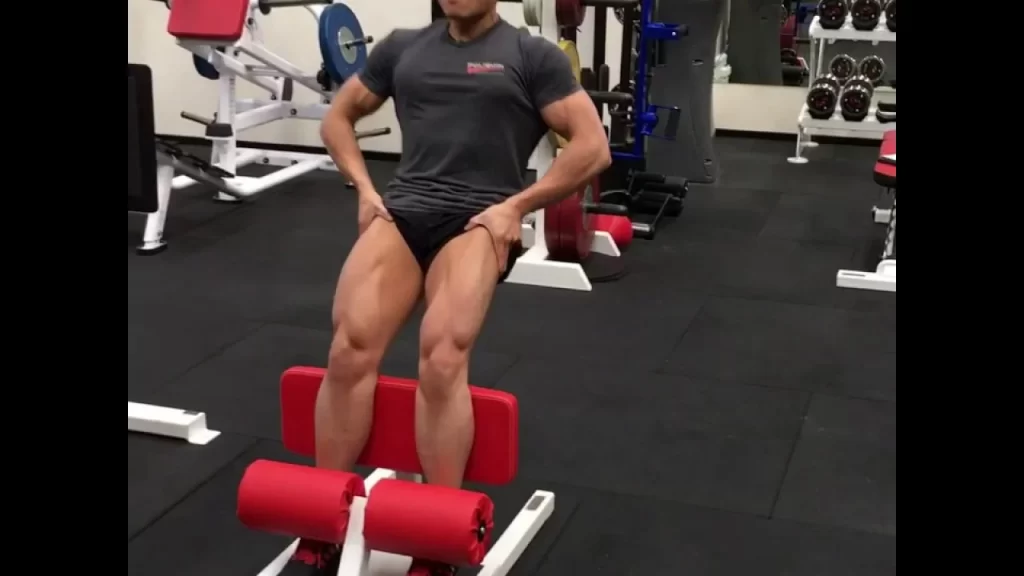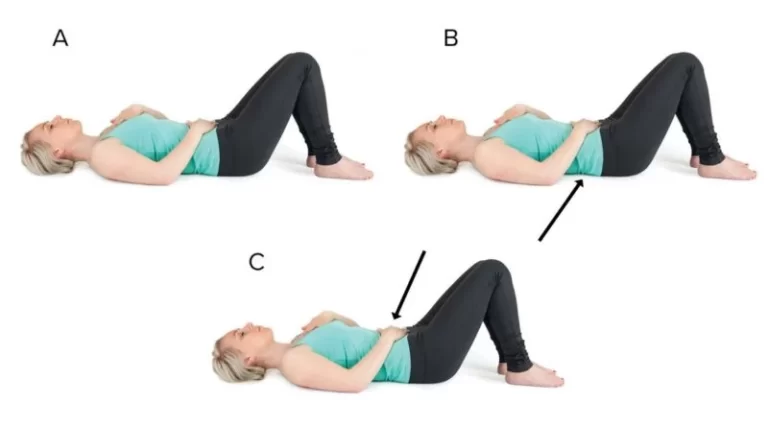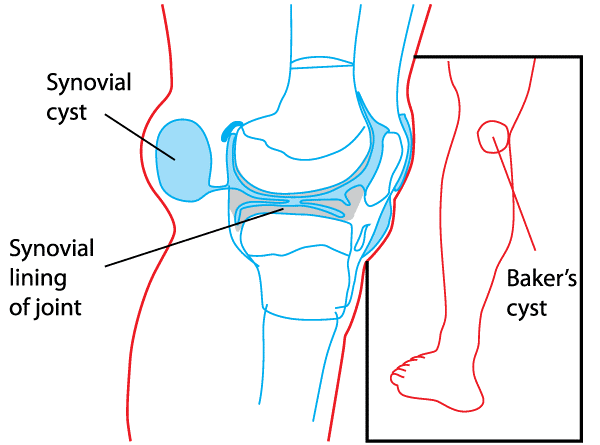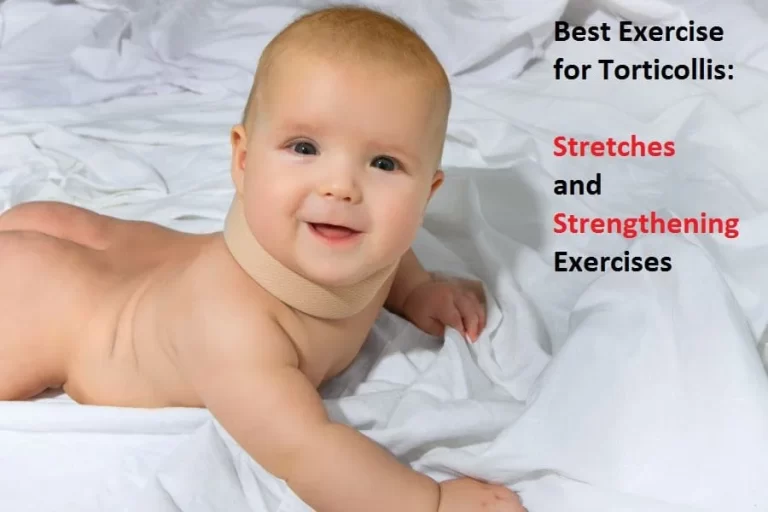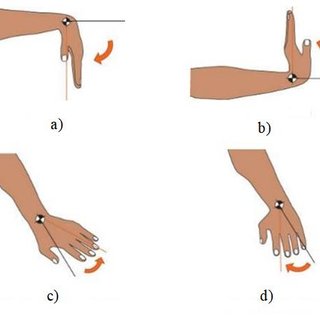15 Best Vastus Lateralis Exercises
Table of Contents
Introduction
The vastus lateralis is one of the four quadriceps muscles located on the front of the thigh. Strengthening this muscle is crucial for maintaining overall lower body strength, stability, and mobility.
Incorporating targeted Vastus Lateralis muscle exercises can help improve athletic performance, enhance functional movement, and prevent injuries. This muscle group is commonly targeted through various exercises such as squats, lunges, leg presses, and lateral step-ups, among others. By incorporating a mix of these exercises into a well-rounded workout routine, individuals can effectively strengthen the vastus lateralis and achieve optimal lower body strength and stability.
What exactly is the Vastus Lateralis?
The vastus lateralis is one of four muscles that make up the quadriceps muscle group and is located on the outer thigh. The vastus lateralis muscle is named after the Latin words Vastus, which means “great,” and Lateralis, which means “lateral side.”
The quadriceps femoris muscle is the largest and produces the most power. The vastus lateralis is formed by flat, wide tendons that attach to the femur and then to the outside side of the patella.
It joins the other quadriceps muscles in the quadriceps tendon, which stretches over the knee and connects them to the tibia. It, along with the iliotibial band, forms the lateral wall of the thigh.
The action of the Vastus Lateralis Muscle
The vastus lateralis’ primary function is to extend the knee and propel the lower leg forward. This muscle also aids in stabilizing the knee joint and is essential in allowing the body to rise from a squatting position.
It not only gives the legs tremendous power, but it also helps to absorb impact from movements such as walking, running, and jumping. The vastus lateralis on the outside of the thigh is opposed by the vastus medialis on the inside of the thigh.
These two muscles work together to keep the patella in the femoral groove of the thigh bone. When these two muscles are out of balance, knee pain can occur, resulting in patellofemoral stress syndrome (PFSS).
What is the purpose of the Vastus Lateralis?
Your legs play an important role in your day and significantly contribute to the driving power required in exercises, with the vastus lateralis producing the majority of the leg power required for activities. The vastus lateralis’ primary function is to extend and straighten your knee, lifting your lower leg.
It is an important functional feature in daily activities such as standing, walking, standing from a seated position, and climbing stairs.
The vastus lateralis also collaborates with the vastus medialis, another quad member, to stabilize the kneecap during movements, preventing potentially crippling injuries.
As a result, strengthening this muscle makes sense if you want to improve your performance, improve joint stability, strengthen your joints, and increase your bone density.
Can the vastus lateralis be isolated?
When performing leg exercises, it is not possible to target and isolate the vastus lateralis muscle. However, there are some tips and tricks you can use to better target it.
To hit this quad muscle better during various pressing exercises, keep your knees closer together and push inwards during the movement while trying not to let your knees open up.
Another tip is to point your toes inwards when performing exercises such as leg extensions, which place more emphasis on the outer thighs.
Vastus lateralis exercises
Close Stance Leg Press
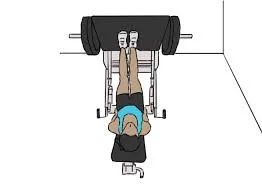
The close stance leg press is also known as the narrow stance leg press. It’s a machine-based exercise that works the leg muscles, especially the quads. The close stance leg press strengthens your lower extremities by targeting the muscles in your hips and outer quads.
While it is great for the Vastus lateralis, it also incorporates some glute and hamstring action. This is an intense lower-body muscle-training exercise that works well as a supplement to compound exercises like squats. It can also be done at the end of your regular workout routine as a finisher exercise.
To perform the close stance leg press, follow these steps:
Set up your feet on the leg press machine.
Step onto the platform ahead of you.
Maintain a 3-inch distance between your feet.
Your toes should be turned outward slightly.
Straighten your back and push your chest outward slightly.
Reduce the weighted leg press from its locked position by lowering the safety bar.
Maintain a neutral neck and tuck your chin as if you were holding a yolk with your chin.
Check that your back is in contact with the back pad.
Step forward on the platform until your legs are fully extended. Your torso and legs should be 90 degrees apart.
Inhale as you lower the plate with your knees almost touching your chest.
Exhale as you use the heels of your feet and your quads to push the platform back to its starting position.
Hold a straight line across your knees and toes throughout the exercise.
This is only one repetition. Perform as many reps as possible.
Dumbbell Lunges

The Vastus lateralis muscle is activated during knee extension movements. This is why the lunge is one of the best exercises for targeting the Vastus lateralis by challenging your balance and leg mobility.
The dumbbell lunge is a compound exercise that improves functional and athletic performance. The dumbbell lunge can be performed in the comfort of your own home or at the gym, provided you have dumbbells and a large enough area to take giant steps.
To perform the dumbbell lunge, follow these steps:
Choose dumbbells with adjustable weights for the number of sets you intend to complete.
Standing erect carrying a dumbbell in each hand.
Maintain full arm extension at your sides, palms facing your body.
Hold your chest and feet on the floor.
Take a deep breath and take a big step ahead using your right leg.
Bend your right thigh until it is parallel to the floor.
Maintain the position of your right knee behind the tips of your right toes.
Your left knee is almost grazing the floor at the bottom of your movement.
Hold this position before standing and stepping back to the starting position with your right foot.
Repeat for an equal number of reps on the left leg.
The Barbell Front Squat
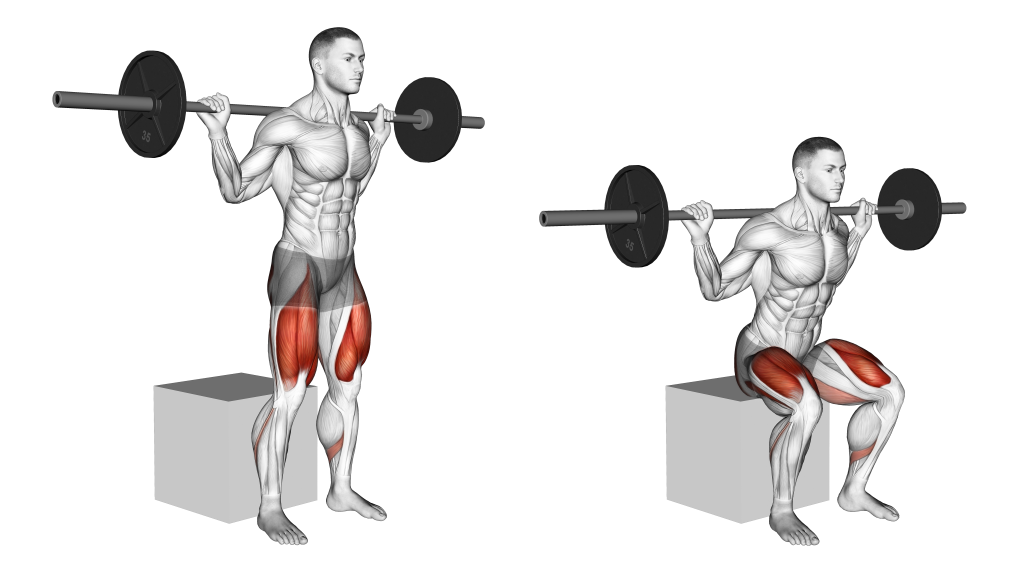
The barbell front squat is a variation of the traditional squat that helps to strengthen hip and leg muscles, particularly the quads and glutes.
To complete this exercise, follow these steps:
With your fingers under and around the barbell, and your elbows pointing forward and away from your torso, grip it. Push your chest forward to support the barbell and straighten your back. Stand with your feet slightly wider than hip-width and your toes pointed outward. Maintain a flat foot and distribute your weight evenly. Go as low as you can or until your hamstrings are just visible above your calves’ backs. For a second, hold your hands in this position.
The Dumbbell Bulgarian Split Squat
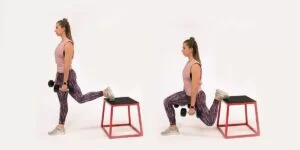
The barbell A lunge and a squat are combined in the Bulgarian split squat exercise. Because the exercise primarily works the quads, it is a simple yet effective way to target the vastus lateralis muscle.
The barbell The Bulgarian split squat is a single-leg compound exercise that works the quads, glutes, and hamstrings. It tests your balance and mobility while also strengthening your legs and increasing your stamina.
To do the dumbbell Bulgarian split squat, follow these steps:
Locate a stable bench, chair, or step.
With your palms facing your body, hold a pair of dumbbells in each hand.
Position yourself with your back to the bench and your feet shoulder-width apart.
Step back two to three feet from the bench.
Maintain a forward posture with your chest forward and your shoulder blades slightly pinched together.
Maintain a neutral neck and chin tuck.
Extend your left foot backward and place the top of your left foot on the bench, pointing your left knee downward.
Balance on your right foot and distribute your weight evenly.
Lower your hips and squat into a semi-lunge and squat with your right knee bent.
Your left knee should be pointing to the floor, and your right knee should be bent at a 90-degree angle.
You should have your right thigh parallel to the floor.
Pause, then drive back to the starting position through your right heel.
This is a single repetition.
Machine Hack Squats
The hack squat is an excellent exercise that works the outer quads, core, and other major lower-extremity muscles. It is an excellent way to introduce your muscles to weighted squats for beginners.
The hack squat is performed with the hack machine, which safely supports the weight while you move your legs. It provides stability and aids in form, so you don’t have to be concerned about nuances in your body alignment.
Video of Machine Hack Squats
To perform the hack squat:
Load the machine with a weight that you can maintain control over throughout your sets.
Set up the machine so that your shoulders and back are against the pads.
place your legs on the platform, hip-width apart, with your toes pointing forward.
Release the safety bar while keeping your back in contact with the pads.
Extend your legs and press your feet into the platform. This is your starting point.
Bend your knees slowly until your thighs are at a 90-degree angle or lower.
To reverse the movement and return to a standing position, drive through your feet.
This is a single repetition. Perform as many reps as possible.
machine so that your shoulders and back are against the pads.
Sissy Squat
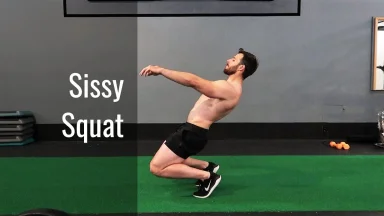
The sissy squat is a more advanced exercise that involves leaning back at the knees while maintaining your feet locked in place. It is an excellent way to strengthen your core muscles and condition the muscles in your hips and legs.
Many people who work out avoid the sissy squat for understandable reasons, which frequently focus on its complexity and the insane amount of stamina required to perform it. Because the sissy squat is difficult to perform without assistance, a sissy squat bench is used.
To complete this exercise, follow these steps:
- Step onto the sissy squat bench’s platform.
- Under the adjustable support bar, place your feet shoulder-width apart.
- Secure your feet in place with the lock pin and support bar.
- For added stability, push your shoulders back and place your hands on your hips.
- Lean back as far as you can while keeping your back straight by bending your knees.
- Hold for a Few Seconds
- Then Relax.
The sissy squat is a strenuous exercise that requires all of your energy and concentration.
Hero Pose
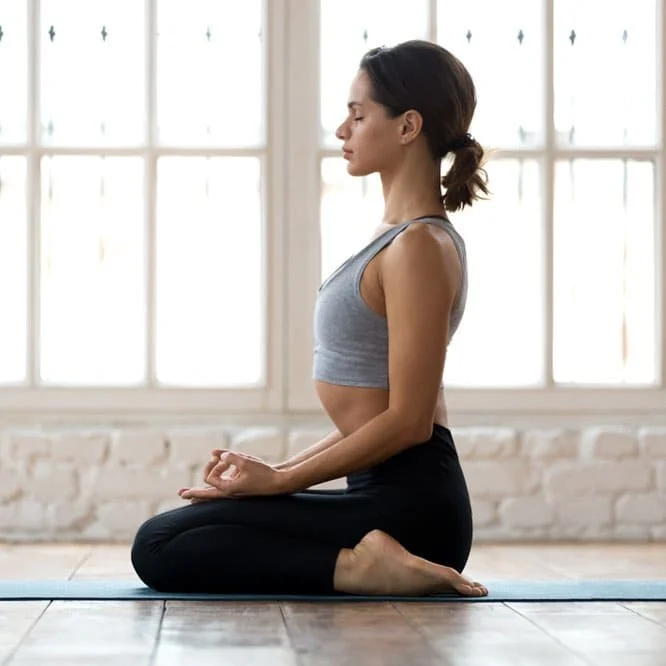
The hero pose is a yoga pose that aims to increase flexibility in the knees, ankles, and thighs. It stretches the quads, hamstrings, and claves, providing much-needed relief from tight and cramped muscles. The hero pose is also an excellent way to correct poor posture caused by bending over desks or sitting all day.
To strike the hero pose, do the following:
Starting in a standing kneeling position.
Maintain a flat top to your feet on the floor/mat.
Maintain your knees together and your feet spread out laterally, toes pointing straight back. This will make room for your butt between your feet.
Maintain a straight back, a neutral neck, and a forward gaze.
Extend your chest and pull your shoulders back.
Exhale as you lower your glutes and sit between your feet, maintaining in the same position.
Fold your hands in your lap.
Hold nearly one minute.
Reclined Hero Pose
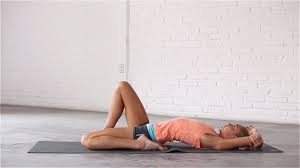
A reclined hero pose is a more advanced version of the hero pose that requires you to lie on your back and stretch fully in the hero pose stretch. It provides a deeper quad stretch than the hero pose.
To do this stretch, follow these steps:
Set yourself up in the hero pose. Place folded towels or a yoga block under your buttocks to get comfortable.
Place your palms by your sides on the floor.
Get comfortable by walking your hands backward.
Lean back and descend on your forearms.
Continue to lean backward until your back touches the floor if you are comfortable going deeper.
Maintain this position for 15 to 20 seconds.
Kneeling Quad Stretch
The kneeling quad stretch is a simple and effective way to loosen the quads and hip flexors. It requires no equipment and can be done at any time and from any location.
To perform the kneeling quad stretch, follow these steps:
If necessary, place an exercise mat on the floor.
Get down on your knees and keep your upper body straight.
Make a 90-degree angle with your right foot in front of you.
Hold your left foot and reach your left hand back.
Lift your left foot to your glutes.
Maintain this posture for 20 to 30 seconds.
Rep on your left leg as many times as you like.
Standing Quad Stretch
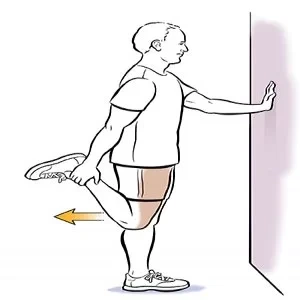
The standing quad stretch stretches the vastus lateralis by loosening the outer quad sweep. It increases flexibility and works well as a warm-up or finisher stretch.
To do the standing quad stretch, follow these steps:
Place your feet shoulder-width apart.
Hold your back straight and focus on looking up.
Extend your chest and slightly back your shoulders.
Bring your left foot to your buttocks while standing on your right leg. You can practise this part with strong support, such as a chair or a wall.
With your left hand, pull your left foot under you.
Maintain a straight posture for 20 to 30 seconds.
Change your feet.
Side-lying Quad Stretch
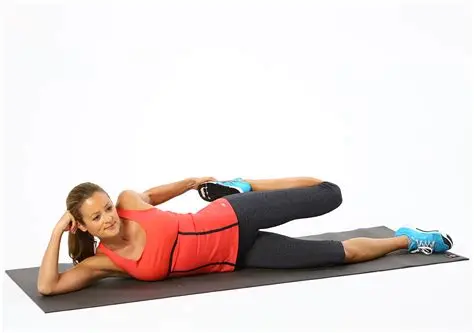
This stretch not only stretches your quads, but it also lengthens your hip flexors, which are notoriously tight in many people.
The Side Lying Quad Stretch is performed as follows:
Lie down on your side.
To move your foot behind you, bend your upper leg’s knee.
Grab your foot and reach back.
Pull in gently while pushing your hips forward.
Hold for 30 seconds.
Rep with the opposite leg.
Hands and Knees Quad Stretch
This stretch requires some balance and coordination to work properly, but trust us when we say it’s well worth the effort. You’ll experience a deep stretch that will help stretch your tight quadriceps.
The Hands and Knees Quad Stretch is performed as follows:
Get down on your knees.
Raise your leg behind you, bending your knee.
Take hold of your ankle and pull your heel towards your glutes.
Maintain for 30 seconds.
Return to the starting position slowly.
Rep with the opposite leg.
Lunges

Lunges are a multi-joint compound exercise that is suitable for lifters of all levels and goals.
Their single-leg nature and greater emphasis on the quadriceps make them ideal as a secondary compound movement or as an equipment-free alternative to more specialized vastus lateralis movements when used as a vastus lateralis exercise.
Lunges work the muscles:
Lunges will work the quadriceps, hamstrings, glutes, and calves with a moderate level of intensity.
Vastus Lateralis Exercise Benefits:
Lunges are a highly dynamic exercise with a low technical and equipment barrier to entry. They can be done by novice exercisers at home without any equipment, or with dumbbells and other types of resistance equipment for better results.
Furthermore, lunges are great for emphasizing the vastus lateralis while also training the rest of the lower body, saving the lifter time and energy.
To complete this exercise, follow these steps:
Standing upright, the lifter will take an exaggerated step forward, bending at the knee and ensuring a slow and controlled motion. As if kneeling with only one leg, the back leg will also bend until it is parallel with the floor.
When the lifter’s back leg is parallel to the floor, they will extend their knees again and return to a standing position, completing the repetition.
Side or Lateral step-ups
Lifters can perform side step-ups for a more aerobic version of vastus lateralis exercises.
ide step-ups are a laterally-moving variation of traditional step-ups primarily performed as part of a plyometric or athletic workout regimen.
Side or lateral step-ups work the muscles.
Side step-ups target the quadriceps, calves, hamstrings, and glutes, with a particular emphasis on the muscles involved in lateral hip movement.
Benefits of a Vastus Lateralis Exercise
Step-ups have the advantage of being highly dynamic while also building muscle more akin to traditional resistance exercises. This means that the exercise can burn calories, improve cardiovascular health, and produce a variety of other high-intensity exercises.
Furthermore, it enables vastus lateralis training in a manner more akin to athletic activities, both in terms of cadence and pure volume of repetitions.
To complete this exercise, follow these steps:
The lifter will stand upright with a block to their side and take an exaggerated step atop the block as if climbing a flight of stairs.
After straightening the leg atop the block, they will drop back to the floor, completing the repetition.
Because this exercise is primarily unilateral, it may result in muscular imbalances if performed on both sides of the body.
Leg Extension
A gymgoer attempting leg extensions
The vastus lateralis muscle is highlighted by pointing your toes inward during this leg extension exercise, which is one of the best leg exercises.
Here’s how you do it:
- Place your ankles on the pad of a leg extension machine.
- Make sure your toes are pointing inward.
- Extend your legs completely at the knees.
- to the starting position slowly.
- Complete the desired number of reps.
Summary
The vastus lateralis is a muscle in the quadriceps muscle group, located on the outer thigh. Its primary function is to extend the knee and propel the lower leg forward, stabilizing the knee joint and aiding in allowing the body to rise from a squatting position. It also helps absorb the impact of movements such as walking, running, and jumping.
The vastus lateralis is essential for daily activities such as standing, walking, standing from a seated position, and climbing stairs. It collaborates with the vastus medialis to stabilize the kneecap during movements, preventing potential injuries. Strengthening the vastus lateralis muscle is beneficial for improving performance, joint stability, and bone density.
Isolating the vastus lateralis muscle is not possible when performing leg exercises. However, tips and tricks can be used to better target it, such as keeping knees closer together and pushing inwards during movements while trying not to let your knees open up. Pointing your toes inwards when performing leg extensions can also help.
Vastus lateralis exercises include the close stance leg press, dumbbell lunges, barbell front squat, and the dumbbell Bulgarian split squat. The close stance leg press targets the quads and glutes, while the dumbbell lunge challenges balance and leg mobility. The barbell front squat strengthens hip and leg muscles, particularly the quads and glutes. The barbell Bulgarian split squat is a single-leg compound exercise that tests balance, mobility, and stamina while working the quads, glutes, and hamstrings.
In summary, the vastus lateralis muscle is crucial for maintaining leg power, stability, and strength in daily activities. By incorporating these exercises into your routine, you can improve your overall fitness and overall well-being.
FAQs
The vastus lateralis muscle’s specific function is to extend the lower leg and allow the body to rise from a squatting position.
Tightness in the vastus lateralis pulls the kneecap slightly sideways, affecting how it glides up and down, causing kneecap pain. Overstretching or overloading the muscle causes tearing in the muscle fibres and quad strain.
The muscle is the largest of the quadriceps group and one of the four quadriceps muscles. The vastus laterails collaborate with the other quad muscles to help extend your knee joint. It also helps to keep the thigh and kneecap in place while walking and running.
Full recovery can take six weeks or longer. Most people feel better after a week or two of rest from a mild strain or sprain. When you no longer have pain and can move your leg through its full range of motion, your quad is healed.
References:
- Set, S. F. (n.d.). 12 Best Vastus Lateralis Exercises & Stretches To Build Impressive Outer Thighs. SET FOR SET. https://www.setforset.com/blogs/news/vastus-lateralis-exercises
- D. (2022, October 23). Vastus lateralis muscle exercise. Mobility Physiotherapy Clinic. https://mobilephysiotherapyclinic.net/vastus-lateralis-muscle-exercise/
- Colletta, M. (2022, June 12). The 10 Best Vastus Lateralis Exercises & Stretches. Steel Supplements. https://steelsupplements.com/blogs/steel-blog/the-10-best-vastus-lateralis-exercises-stretches
- Luna, D. (2023, August 21). 7 Best Vastus Lateralis Exercises (with Pictures!). Inspire US. https://www.inspireusafoundation.org/vastus-lateralis-exercises/
- S. (2023, September 30). 7 Best Vastus Lateralis Muscle Workouts to Try. Sportskeeda. https://www.sportskeeda.com/health-and-fitness/exercises-vastus-lateralis
- Mikesch, C., & Mikesch, C. (2023, August 23). Best Vastus Lateralis Exercises (Ultimate Thigh Moves). Total Shape. https://totalshape.com/training/vastus-lateralis-exercises/

